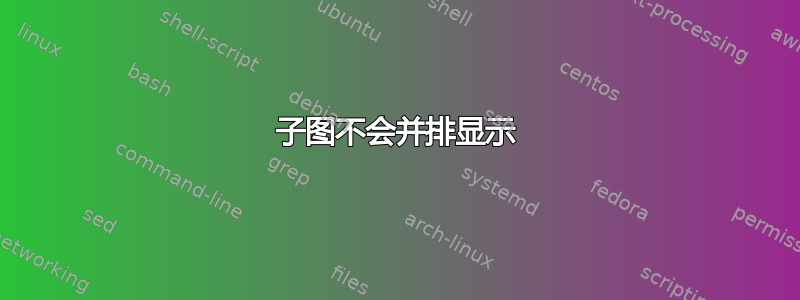
我在将两张 tikzpicture 并排对齐时遇到了问题。似乎我尝试的所有方法都无法阻止它们堆叠在一起。
这是一个 MWE,第二个 tikzpicture 是一个圆圈,只是为了显示问题。
\documentclass[a4paper]{article}
\usepackage{geometry}
\geometry{left=20mm,right=20mm,top=20mm,bottom=20mm}
\usepackage[font=small, labelfont=bf, labelsep=space, justification=centering]{caption}
\usepackage[list=true]{subcaption}
\usepackage{tikz}
\usetikzlibrary{angles}
\usetikzlibrary{arrows}
\usetikzlibrary{quotes}
\usepackage{tkz-euclide}
\begin{document}
\begin{figure}[h]
\centering
\subcaptionbox{Sezione del cilindro, $h>d$.\label{fig:h>d}}{
\centering
\resizebox{0.45\textwidth}{!}{
\begin{tikzpicture}%[scale=]
\begin{scope}[rotate = 30]
\draw[black, thick] (0,0) rectangle (6,4);
\draw[black, thick, loosely dotted] (-0.5,2) -- (6.35,2);
\draw[black, thick, loosely dotted] (3,-0.5) -- (3,4.5);
\draw[black, loosely dashed] (3,2) -- (1.85,0);
\filldraw[black] (0,2) circle (2pt) node[anchor=east] {M \quad};
\filldraw[black] (1.85,0) circle (2pt) node[anchor=north] {\quad T};
\filldraw[black] (3,2) circle (2pt) node[anchor=west] {CDM};
\filldraw[black] (0,0) circle (2pt) coordinate(P) node[anchor=north] {P$=(0,0)$};
\filldraw[black] (0,4) circle (2pt) node[anchor=east] {A};
\filldraw[black] (6,0) circle (2pt) coordinate(B) node[anchor=north west] {B};
\filldraw[black] (6,4) circle (2pt) node[anchor=south] {C};
\draw[|-|] (6.4, 0) -- (6.4,2) node[anchor=south west] {$d$} -- (6.4,4);
\draw[|-|] (0,4.7) -- (3,4.7) node[anchor = south east] {$h$} -- (6,4.7);
\end{scope}
\draw[black, loosely dashed, ->] (0,0) -- (0,5.3) node[anchor = north west] {$y$};
\filldraw[black] (0,4.625) circle (2pt) node[anchor=south east] {Q};
\draw[black, loosely dashed, ->] (-1.5,0) -- (2,0) coordinate(G) node[anchor = west] {$x$};
\pic["$\alpha$",draw=black,thick,<->,angle eccentricity=1.2,angle radius=1.2cm] {angle=G--P--B};
\end{tikzpicture}
}
}
\hfill
\subcaptionbox{Sezione del cilindro, $h<d$.\label{fig:h<d}}{
\centering
\resizebox{0.45\textwidth}{!}{
\begin{tikzpicture}[scale=0.2]
\filldraw[black] (0,0) circle (2pt);
\end{tikzpicture}
}
}
\end{figure}
\end{document}
答案1
让我解释一下我的评论:您需要删除subcaptionboxes 之间的空行。它会开始新的行。
一些题外话:
- 我不会用
\resizebox。 - 左图的代码也可以按照以下(简洁)的方式编写:
\documentclass[a4paper]{article}
\usepackage[margin=20mm]{geometry}
\usepackage[font=small, labelfont=bf, labelsep=space, justification=centering]{caption}
\usepackage[list=true]{subcaption}
\usepackage{tikz}
\usetikzlibrary{angles, arrows,
quotes}
\usepackage{tkz-euclide} % not used in this image
\begin{document}
\begin{figure}[h]
\centering
\subcaptionbox{Sezione del cilindro, $h>d$.\label{fig:h>d}}{
\begin{tikzpicture}[
dot/.style = {circle, fill=red, minimum size=5pt, inner sep=0pt}
]
\begin{scope}[rotate = 30]
\draw[thick] (0,0) rectangle (6,4);
\draw[thick, loosely dotted] (-0.5,2) -- (6.35,2);
\draw[thick, loosely dotted] (3,-0.5) -- (3,4.5);
\draw[loosely dashed] (3,2) -- (1.85,0);
\node[dot,label= left:N] at (0,2) {};
\node[dot,label=below:T] at (1.85,0) {};
\node[dot,label=right:CDM] at (3,2) {};
\node (P) [dot,label=below:{P$=(0,0)$}] at (0,0) {};
\node[dot,label= left:A] at (0,4) {};
\node (B) [dot,label=right:B] at (6,0) {};
\node[dot,label=above:C] at (6,4) {};
\draw[|-|] (6.4, 0) to ["$d$" '] (6.4,4);
\draw[|-|] (0,4.7) to ["$h$"] (6,4.7);
\end{scope}
\draw[loosely dashed, ->] (0,0) -- (0,5.3) node[anchor = north west] {$y$};
\draw[loosely dashed, ->] (-1.5,0) -- (2,0) node (G)[anchor = west] {$x$}; \node[dot,label=above left:Q] at (0,4.625) {};
\pic["$\alpha$",draw,thick,<->,angle eccentricity=1.2,angle radius=1.2cm] {angle=G--P--B};
\end{tikzpicture}
}
\hfil
\subcaptionbox{Sezione del cilindro, $h<d$.\label{fig:h<d}}{
%\resizebox{0.45\textwidth}{!}{
\begin{tikzpicture}%[scale=10]
\filldraw[black] (0,0) circle (20pt);
\end{tikzpicture}
%}
}
\end{figure}
\end{document}
答案2
正如扎科所说。
\documentclass[a4paper]{article}
\usepackage{geometry}
\geometry{left=20mm,right=20mm,top=20mm,bottom=20mm}
\usepackage[font=small, labelfont=bf, labelsep=space, justification=centering]{caption}
\usepackage[list=true]{subcaption}
\usepackage{tikz}
\usetikzlibrary{angles}
\usetikzlibrary{arrows}
\usetikzlibrary{quotes}
\usepackage{tkz-euclide}
\begin{document}
\begin{figure}[h]
\centering
\subcaptionbox{Sezione del cilindro, $h>d$.\label{fig:h>d}}{
\centering
\resizebox{0.45\textwidth}{!}{
\begin{tikzpicture}%[scale=]
\begin{scope}[rotate = 30]
\draw[black, thick] (0,0) rectangle (6,4);
\draw[black, thick, loosely dotted] (-0.5,2) -- (6.35,2);
\draw[black, thick, loosely dotted] (3,-0.5) -- (3,4.5);
\draw[black, loosely dashed] (3,2) -- (1.85,0);
\filldraw[black] (0,2) circle (2pt) node[anchor=east] {M \quad};
\filldraw[black] (1.85,0) circle (2pt) node[anchor=north] {\quad T};
\filldraw[black] (3,2) circle (2pt) node[anchor=west] {CDM};
\filldraw[black] (0,0) circle (2pt) coordinate(P) node[anchor=north] {P$=(0,0)$};
\filldraw[black] (0,4) circle (2pt) node[anchor=east] {A};
\filldraw[black] (6,0) circle (2pt) coordinate(B) node[anchor=north west] {B};
\filldraw[black] (6,4) circle (2pt) node[anchor=south] {C};
\draw[|-|] (6.4, 0) -- (6.4,2) node[anchor=south west] {$d$} -- (6.4,4);
\draw[|-|] (0,4.7) -- (3,4.7) node[anchor = south east] {$h$} -- (6,4.7);
\end{scope}
\draw[black, loosely dashed, ->] (0,0) -- (0,5.3) node[anchor = north west] {$y$};
\filldraw[black] (0,4.625) circle (2pt) node[anchor=south east] {Q};
\draw[black, loosely dashed, ->] (-1.5,0) -- (2,0) coordinate(G) node[anchor = west] {$x$};
\pic["$\alpha$",draw=black,thick,<->,angle eccentricity=1.2,angle radius=1.2cm] {angle=G--P--B};
\end{tikzpicture}
}%
}%
\subcaptionbox{Sezione del cilindro, $h<d$.\label{fig:h<d}}{
\centering
\resizebox{0.45\textwidth}{!}{
\begin{tikzpicture}[scale=0.2]
\filldraw[black] (0,0) circle (2pt);
\end{tikzpicture}
}
}
\end{figure}
\end{document}





